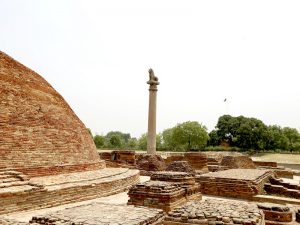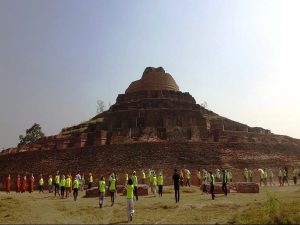7 Best Places to Visit in Vaishali in Bihar – Complete Travel Guide
Why Explore Vaishali in Bihar?
Known as one of the world’s earliest republics and a sacred Buddhist destination, Vaishali in Bihar is a gem for history lovers, pilgrims, and curious travelers. This ancient Vaishali place has seen the footsteps of Lord Buddha, Lord Mahavira, and even Emperor Ashoka. Today, it offers a mix of archaeological wonders, spiritual centers, and cultural landmarks that make it one of the top historical spots in India.
If you’re planning a trip, here are the 7 best places to visit in Vaishali that you shouldn’t miss.
1. Ashoka Pillar
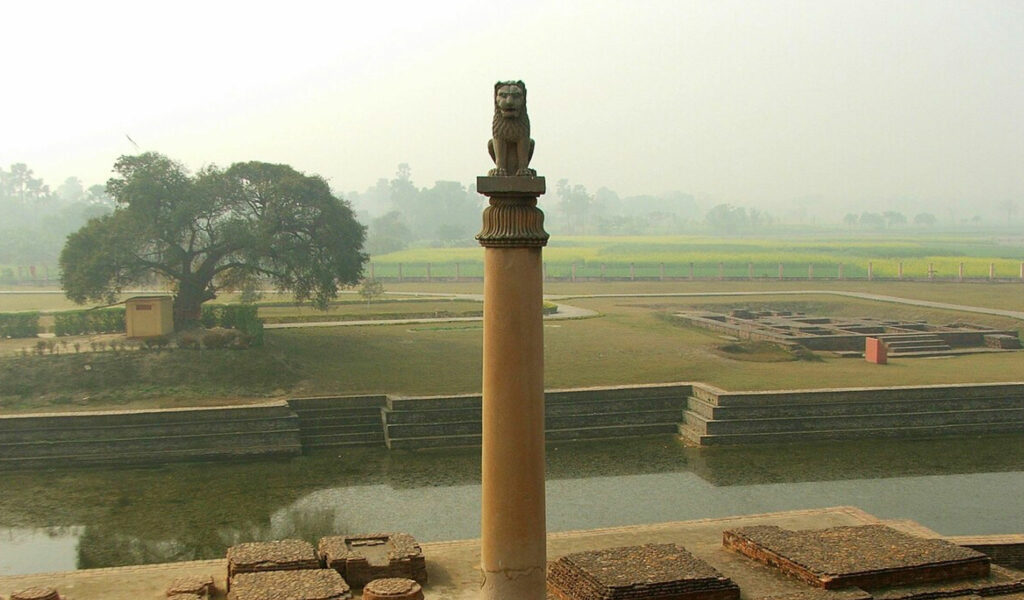
When you think of Vaishali in Bihar, the first image that comes to mind is the majestic Ashoka Pillar. Built in the 3rd century BCE by Emperor Ashoka, this towering monolithic sandstone pillar stands as a reminder of India’s deep connection with Buddhism and peace. The pillar is located in Kolhua, an important archaeological site of Vaishali.
The significance of this Vaishali place lies in its association with the final sermons of Lord Buddha. It is said that Buddha visited Vaishali frequently, and his last sermon was delivered here before his Mahaparinirvana. To commemorate this event, Ashoka built the pillar topped with a single lion capital. Unlike the four-lion capital in Sarnath, this one-lion design is unique and symbolizes the spread of Dharma.
Visiting the Ashoka Pillar is not just about admiring its polished stone surface; it’s about stepping back in time. The structure, standing tall amidst green fields and ruins, creates a surreal atmosphere. Archaeologists believe the pillar was erected around 2300 years ago, and its craftsmanship is a marvel considering the tools of that era.
This site is surrounded by other historical remains such as the Buddha’s Stupa and monasteries, making it one of the most important places to visit in Vaishali. It’s also a spot where travelers can sit quietly, meditate, and absorb the spiritual energy that still lingers in the air.
Visitor Information:
•📍 Location: Kolhua, Vaishali (approx. 3 km from Vaishali Museum)
•⏱️ Ideal Duration: 30–45 minutes
•🕐 Best Time to Visit: Morning or evening for a peaceful atmosphere
•💡 Travel Tip: Hire a local guide to get detailed insights into the history of the pillar and surrounding ruins.
The Ashoka Pillar is not just an archaeological relic; it’s a living testimony to Vaishali’s glorious past. For anyone exploring Vaishali in Bihar, this is a must-see site that beautifully combines history, spirituality, and heritage.
2. Vishwa Shanti Stupa
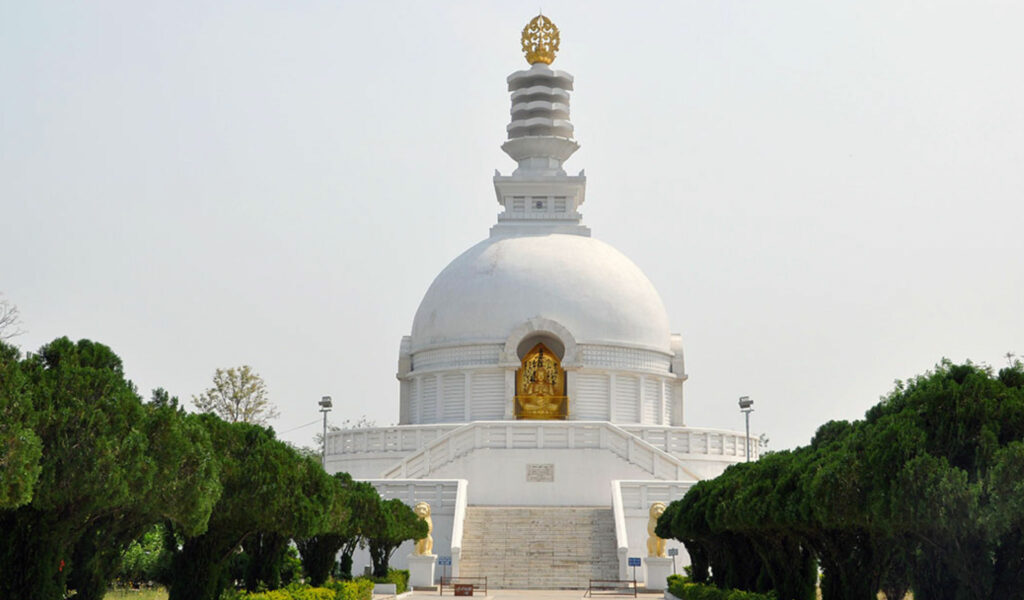
One of the most serene and spiritual attractions in Vaishali in Bihar is the Vishwa Shanti Stupa (World Peace Pagoda). Built in collaboration with the Japanese Buddhist Sangha, this gleaming white stupa was constructed to spread the message of peace and harmony as taught by Lord Buddha. It is one of the many Peace Pagodas across the world, and its presence in Vaishali emphasizes the city’s deep Buddhist roots.
Standing at an impressive 125 feet tall, the stupa is surrounded by beautifully landscaped gardens and a tranquil water body that adds to the meditative atmosphere. Four golden statues of Lord Buddha, placed around the stupa in different postures – meditation, teaching, sleeping, and blessing – depict the key stages of his life. The stupa is especially enchanting at sunrise and sunset, when its white marble surface glows under the changing colors of the sky.
The Vishwa Shanti Stupa is not just an architectural wonder but also a place for introspection and spiritual connection. Pilgrims and visitors often spend hours meditating here or simply walking around the stupa in silence. The air is calm, and the sounds of chanting occasionally fill the surroundings, making it a perfect retreat from daily chaos.
Adding to its charm is the nearby Japanese Temple and Buddhist Monastery, which give visitors a chance to witness Japanese architectural influences and rituals. Together, they create a blend of international cultural heritage and local spirituality.
Visitor Information:
•📍 Location: Near Rajgir Road, Vaishali
•⏱️ Ideal Duration: 1–1.5 hours
•🕐 Best Time to Visit: Early morning or evening for peaceful vibes
•💡 Travel Tip: Don’t miss the boat ride in the adjacent pond for a unique experience of the stupa’s reflection on water.
For travelers searching for spiritual solace, the Vishwa Shanti Stupa is undoubtedly one of the top places to visit in Vaishali. It’s not only a monument of peace but also a reminder of Vaishali’s timeless importance in the global Buddhist network.
3. Buddha’s Relic Stupas

If there is one Vaishali place that truly connects you to Lord Buddha, it is the Relic Stupas of Vaishali. There are two main stupas, commonly known as Stupa 1 and Stupa 2, which were excavated by archaeologists and found to contain relics of Buddha himself. These relics were preserved in stone caskets, making the site deeply sacred for Buddhists around the world.
Located close to the Ashoka Pillar, these stupas stand as silent witnesses to an era when Vaishali was a thriving Buddhist center. They were constructed by the Lichchavi rulers, who were ardent followers of Buddha and preserved his teachings and relics with utmost devotion. For spiritual seekers, visiting these stupas offers a rare opportunity to be in the presence of something directly associated with the Enlightened One.
The atmosphere here is calm and meditative. Surrounded by greenery, the stupas may appear simple at first glance, but their historical and religious importance is immense. Pilgrims often walk around the stupas, perform circumambulations, and sit quietly in prayer.
For history enthusiasts, the relic stupas are a fascinating example of early Buddhist architecture. The stone caskets discovered during excavation are displayed in the nearby Vaishali Museum, adding another layer of depth to the visit.
Visitor Information:
•📍 Location: Near Ashoka Pillar Complex, Vaishali
•⏱️ Ideal Duration: 45 minutes–1 hour
•🕐 Best Time to Visit: Morning hours for peaceful exploration
•💡 Travel Tip: Hire a guide or visit the museum first to understand the significance of the relics before exploring the site.
The Buddha’s Relic Stupas are among the most important places to visit in Vaishali because they are not just monuments, but living reminders of Buddha’s legacy. If you want to feel the essence of Buddhism in Vaishali, this site is absolutely unmissable.
4. Vishal Fort (Vishal’s Garh)
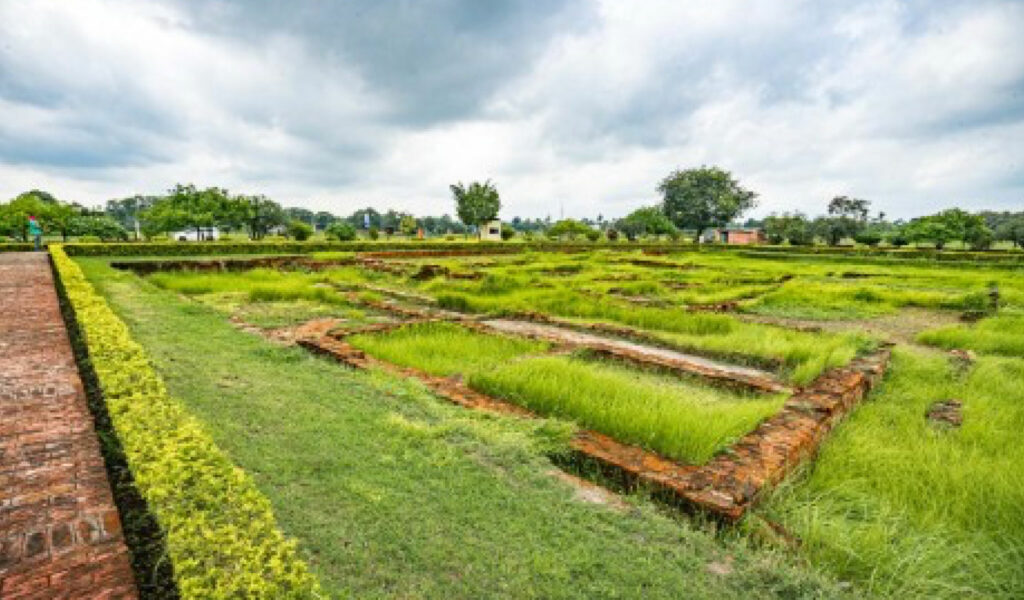
Among the historical gems of Vaishali in Bihar, the Vishal Fort, also called Vishal’s Garh, stands out as a powerful reminder of the city’s ancient political significance. Unlike traditional forts with towering walls and palaces, this site is the sprawling remains of a grand assembly hall believed to have been the seat of the Lichchavi Republic – one of the world’s earliest forms of democracy.
The fort spreads over nearly 1 kilometer in area and is surrounded by an earthen embankment. It is believed that around 7,000 representatives of the Lichchavi clan gathered here to discuss matters of governance, trade, and culture. This makes Vishal’s Garh not just an archaeological site, but also a landmark in the history of democracy.
Walking through the ruins, visitors can still sense the grandeur of what must once have been a magnificent hall. Though time has weathered its structures, the sheer scale of the site is awe-inspiring. The fort also holds mythological significance, as some legends associate it with King Vishal, after whom the fort is named.
Today, the site is maintained by the Archaeological Survey of India (ASI) and attracts both tourists and scholars. The open fields around the fort are a delight for photography enthusiasts, especially during sunrise and sunset when the ruins cast long shadows over the ground.
Visitor Information:
•📍 Location: About 3 km from Vaishali Museum
•⏱️ Ideal Duration: 1 hour
•🕐 Best Time to Visit: Early morning or late afternoon
•💡 Travel Tip: Carry water and a hat, as the area is open and can get hot during the day.
The Vishal Fort is more than a ruined structure; it’s a place that highlights Vaishali’s role as a pioneer in the concept of republics. For travelers interested in history and politics, this is among the most enriching places to visit in Vaishali.
5. Bawan Pokhra Temple
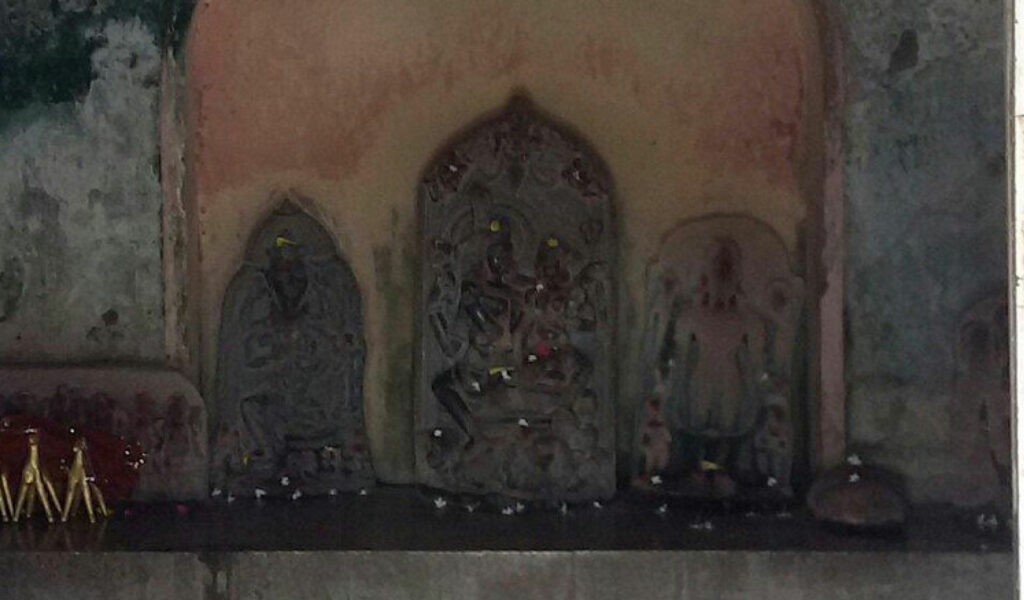
When it comes to spiritual experiences in Vaishali in Bihar, the Bawan Pokhra Temple stands as a unique gem that blends religion with art. This ancient temple, believed to have been built during the Pala dynasty, is a must-visit for anyone curious about the artistic heritage of the region. Unlike most Buddhist sites in Vaishali, this temple is dedicated to Hindu deities, making it an important spot that showcases Vaishali’s religious diversity.
The temple is located near the Bawan Pokhar Tank, a large water reservoir that adds to the beauty and serenity of the place. The temple itself houses a fascinating collection of stone and metal sculptures depicting Hindu gods and goddesses, including Vishnu, Shiva, Durga, and Ganesha. Many of these idols are intricately carved, with fine details that highlight the artistic excellence of the Pala period. For lovers of history and archaeology, the craftsmanship here is awe-inspiring.
The temple remains an active place of worship, with devotees visiting regularly to offer prayers. Festivals like Durga Puja and Shivratri are celebrated with great enthusiasm, filling the temple with vibrant colors, lights, and chants. Travelers visiting during these times get to witness local traditions and cultural richness up close.
What makes this Vaishali place even more appealing is the picturesque pond right next to it. The calm waters of the Bawan Pokhar Tank create a peaceful setting, perfect for a reflective walk or quiet relaxation. Many visitors also enjoy photographing the reflections of the temple on the water surface, especially during the golden hours of sunrise or sunset.
Visitor Information:
•📍 Location: Near Bawan Pokhar Tank, Hajipur side of Vaishali
•⏱️ Ideal Duration: 45 minutes–1 hour
•🕐 Best Time to Visit: Evening time for cultural atmosphere and stunning views
•💡 Travel Tip: Carry your camera, as the combination of temple architecture and pond reflections makes for excellent photography.
The Bawan Pokhra Temple is not only a place of devotion but also a living museum of Vaishali’s artistic and cultural past. For travelers, it’s one of the most enriching places to visit in Vaishali that balances spirituality, history, and natural beauty.
6. Abhishek Pushkarini
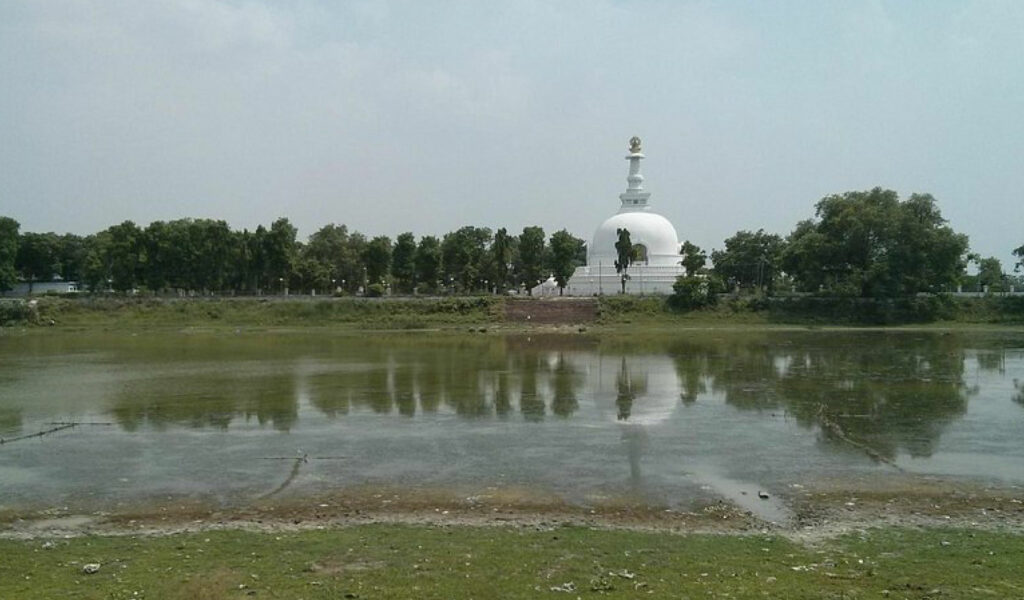
One of the most historically significant sites in Vaishali in Bihar is the Abhishek Pushkarini, also known as the Coronation Tank. This sacred water body holds a unique place in the city’s history, as it was here that the rulers of Vaishali were anointed during their coronation ceremonies. The tank was believed to possess divine powers, and its waters were considered holy enough to legitimize the rule of kings.
Surrounded by lush greenery and ruins of the past, the tank offers a glimpse into the grandeur of ancient Vaishali. Even though the site appears simple today, its importance in the socio-political and spiritual life of Vaishali cannot be underestimated. Archaeological studies suggest that this tank was maintained meticulously during the Lichchavi period, showcasing the city’s advanced urban planning.
For visitors, Abhishek Pushkarini offers both historical curiosity and spiritual calm. Pilgrims often come here to take a ritual dip in the sacred waters, while others prefer sitting by the edge to enjoy the peaceful setting. During early mornings, the mist over the water adds a mystical charm, while evenings are perfect for photography with the golden reflections of the sky.
This Vaishali place is closely linked with other nearby attractions such as Vishal Garh, making it convenient to explore both on the same trip. Together, they highlight Vaishali’s importance not just as a religious site but also as a seat of governance and ritual practices.
Visitor Information:
•📍 Location: Near Vishal Garh, Vaishali
•⏱️ Ideal Duration: 30–45 minutes
•🕐 Best Time to Visit: Early morning or sunset for peaceful ambiance
•💡 Travel Tip: Combine your visit with Vishal Garh to get a complete experience of Vaishali’s royal and political heritage.
The Abhishek Pushkarini may look like just a tank, but its sacred waters carry the echoes of Vaishali’s glorious past. It’s undoubtedly one of the most meaningful places to visit in Vaishali for those who want to understand the city’s cultural and political legacy.
7. Vaishali Museum

No trip to Vaishali in Bihar is complete without a stop at the Vaishali Museum. Established by the Archaeological Survey of India (ASI), the museum houses priceless artifacts excavated from Vaishali’s many historical sites. For anyone who wants to dive deeper into the history, art, and culture of this ancient city, the museum is a treasure trove.
The museum’s collection includes terracotta figurines, pottery, coins, seals, sculptures, and relics that date back to different periods of Vaishali’s history. One of the highlights is the stone casket found in Buddha’s Relic Stupas, believed to contain his ashes. This makes the museum a sacred stop for Buddhist pilgrims. Other remarkable exhibits include intricate Pala-era sculptures and jewelry pieces that reflect the artistic skills of ancient craftsmen.
The museum is divided into several galleries, each dedicated to a different aspect of Vaishali’s past. The Buddhist gallery is particularly popular, as it provides insights into the life and teachings of Buddha and Vaishali’s role in spreading Buddhism. Another gallery showcases artifacts from the Lichchavi period, giving visitors an understanding of Vaishali’s status as one of the earliest republics in the world.
What makes the museum special is its ability to contextualize the monuments spread across Vaishali. By exploring the museum first, travelers gain a deeper appreciation when they later visit sites like the Ashoka Pillar, Buddha’s Stupas, or Vishal Garh.
Visitor Information:
•📍 Location: Near Ashoka Pillar Complex, Vaishali
•⏱️ Ideal Duration: 1–1.5 hours
•🕐 Timings: 10 AM–5 PM (closed on Fridays)
•💡 Travel Tip: Visit the museum before exploring the outdoor monuments to better understand their history and importance.
The Vaishali Museum is more than just a collection of artifacts—it’s a window into the glorious past of this ancient land. For students, history buffs, and travelers alike, it’s one of the most insightful places to visit in Vaishali, offering a comprehensive understanding of the city’s timeless significance.
Travel Tips for an Enriching Visit to Vaishali
•Best Time to Visit: Avoid the scorching summer months—opt for October to March when the weather is pleasant and the Sonepur Mela (if on your list) takes place.
•Transport Options: Vaishali is well-connected by buses, auto-rickshaws, and private traveler vehicles—making your sightseeing both convenient and affordable.
•Local Insights: At the Vishwa Shanti Stupa, take a tranquil boat ride. At Bawan Pokhra Temple, spend time admiring the intricate sculptures. And if you’re at the Sonepur Mela, be sure to sample local street food and pick up beautiful handicraft souvenirs.
FAQs about Vaishali in Bihar
1.What are the top attractions in Vaishali?
Key sites include the Ashoka Pillar, Vishwa Shanti Stupa, Buddha’s Stupas, Vishal Fort, Bawan Pokhra Temple, and the seasonal Sonepur Mela.
2. How far are these sites from the city center?
Ashoka Pillar is about 3 km away; Vishwa Shanti Stupa and Buddha’s Stupas are around 4 km; Vishal Fort is roughly 45 km out, while Bawan Pokhra Temple is just 4 km away.
3. When does the Sonepur Mela happen?
Typically held in late November to early December—it stretches over 15 days and is one of Asia’s largest fairs.
4. What’s the best way to commute in Vaishali?
Buses, autos, and private traveler vehicles are widely available for hassle-free sightseeing.
Final Thoughts
From sacred stupas to ancient republic ruins, Vaishali in Bihar is a destination where history comes alive. Each Vaishali place tells a unique story, whether it’s Buddha’s last sermon at the Ashoka Pillar or the grandeur of Vishal Fort. By covering these 7 best places to visit in Vaishali, you’ll experience the perfect blend of spirituality, culture, and heritage.

